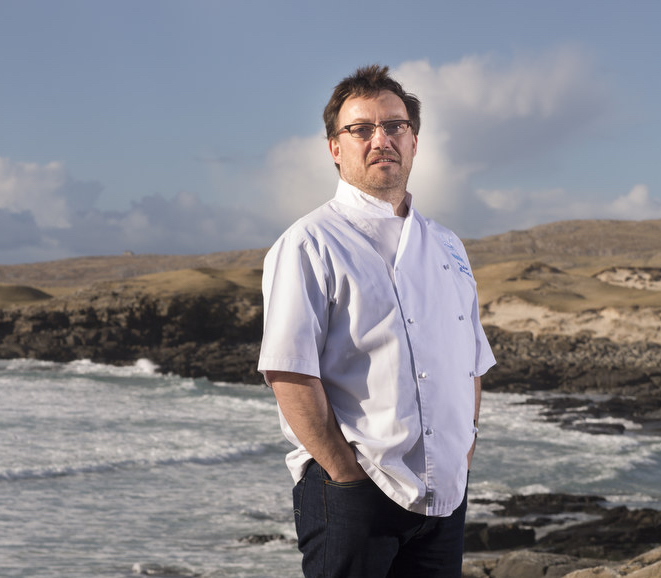Profile
The unique natural clean island maritime air, the banning of pesticides on Barra and the herbage of the machair make this island snail unique. Gerard MacDonald, The Isle of Barra Oyster Company, who lives on Barra made it his business to resurrect a market for this fine product and approached SF Cooks Alliance Member Fred Berkmiller, at a time when not another soul was interested (pictured). There was no longer a market for the Barra Snail. Locals only considered it fit for fish bait!
The snails flourish on the calcium-rich machair of Barra, where a mild wet climate mixes with the alkaline sandy soil to produce ideal conditions for the snails to grow. It is this remoteness that contributes to the quality of Barra’s snails.
Christianity arrived on Barra when a monk and hermit, probably a Gaelic Scot known now as St Finnbarr of Barra, founded Kille Bharra in the 6th century AD. It is likely that the cell on Barra belonged to St Finnbarr. In 620AD monastic buildings were established. The monks’ lifestyle involved fasting and during these periods meat was not allowed but the Roman Catholic Church allowed the eating of fish, and snails, for this purpose, were classified as fish and most certainly came in these early centuries with monks as a valuable source of protein.
They taste slightly salty with faint traces of iodine – they taste of the land that produces them; their taste reflects both the rich herbage of the machair meadows but also a saltiness reflecting the maritime climate. On Barra there are few trees and bushes for birds that prey on snails (e.g. thrushes). Barra also has few ground predators (e.g. no hedgehogs). The snails are hand harvested.
Available from Isle of Barra Oyster Co. so clink on email icon
https://www.fondazioneslowfood.com/en/ark-of-taste-slow-food/isle-of-barra-snail/
photos: Fred Berkmiller


